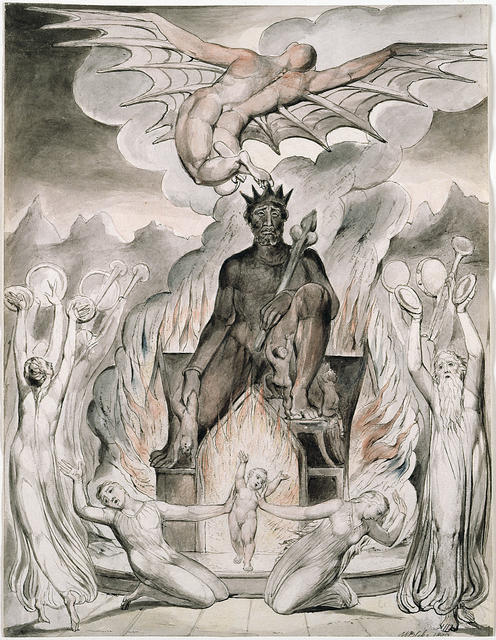by Brian Shilhavy
Editor, Health Impact News
We are seeing the collapse of the U.S. financial system drawing closer and closer each day.
Last year, the only thing that supported the U.S. financial system and stopped it from completely collapsing, was investment into AI and the 7 technology stocks, referred to as the “Magnificent 7”.
Today, as we head into the last couple of weeks of the First Quarter in 2024, many of those “Magnificent 7” stocks are beginning to fall back from the AI bubble created in 2023, and there is now really only one of these stocks that has been basically stopping a full stock market crash, Nvidia, the leading manufacturer for the power-hungry computer processors needed to run AI.
Nvidia is now worth more than all of these companies combined: AT&T, Boeing, Coca-Cola, Disney, FedEx, General Motors, IBM, McDonald’s, Nike, Starbucks, UPS, and Walmart. (Source.)
Nvidia recently reached a $2 trillion market value and has easily beat the previous most valued Big Tech company, Apple. Apple’s valuation continues to decline, along with other Big Tech companies like Tesla, partly because of their dependence on the China market. See:
Apple iPhone sales slump 24% in China to start the year, report says
And many investors are wise enough to see that Nvidia’s current valuation is also a huge bubble that is going to burst.
Nvidia’s $2 trillion market cap looks bubbly
AI chipmaker Nvidia topped $2 trillion in market cap on Friday less than nine months after crossing the $1 trillion threshold.
Why it matters: AI-drunk investors have bid up Nvidia, whose advanced chips power AI systems, to bubble-like levels. The company’s stock chart parties like it’s 1999 — and we all remember what happened to the dotcom era darlings a year later.
- AI is no fad, but neither was the internet. That didn’t stop dotcom stocks from collapsing.
Driving the news: The company gained $277 billion in value Thursday — Wall Street’s biggest single-day gain ever, per Reuters — after its quarterly earnings, reported Wednesday, suggested the AI boom has legs.
- Nvidia’s wild ride is propelled by demand for its graphics processors, which have turned out to be ideal not only for Bitcoin mining — which drove a previous wave of Nvidia mania — but also for the kind of number-crunching that ChatGPT and similar AI programs demand.
Yes, but: That demand is probably at its peak right now.
- Both the moment’s AI mania and global shortages of the most advanced processors have placed a premium on Nvidia’s products. That premium is a lot more likely to erode than hold.
- You can’t ramp up a chip powerhouse overnight, but over time Nvidia will face a rising wave of competitors.
- New research breakthroughs could radically alter the technical needs of AI systems, reducing reliance on Nvidia’s super-chips.
The stock market, in other words, is doing the opposite of what it’s supposed to — it’s responding to the present moment’s obsessions rather than predicting future profit growth. (Full article.)
Besides Nvidia, the other “product” that is holding up the financial system right now is the new Bitcoin ETF that the SEC approved recently.
For those who are unfamiliar with what ETF funds are, they are basically gambling funds where you bet on what is going to happen in the future, without actually owning anything.
So if you invest in the new Bitcoin ETF, you don’t actually own Bitcoins. You own a share in an ETF fund that increases or decreases in value based on the price of the actual Bitcoins.
There are even “Inverse ETFs” that one can invest in, where you basically bet that a certain stock or commodity is going to DECREASE in market value, and the more it decreases, the more you earn in Inverse ETFs.
I suspect that an Inverse ETF will soon be approved for Bitcoin as well, where you can make money when the price of Bitcoin decreases.
This is what the financial system, our debt-based financial system where nobody really owns anything as it is all leveraged against debt, has become. It is one huge Ponzi scheme, controlled by the Central Bankers.
Some are even asking if a Central Bank is now hoarding Crypto assets in order to stay liquid.
Judging from the price action last week, the everything rally remains resilient to the effects of monetary tightening. Have we sprung a monetary leak somewhere that is providing mysterious liquidity into markets? Or is this all just a huge lag effect as the Covid-era torrents of easy money continue to wash through the economy and the US deficit remains close to 6.5% of GDP?
Whatever the case, some of the moves are very interesting. News has emerged of a crypto whale dubbed ‘Mr 100’ who has been quietly accumulating a $3.1bn stash of Bitcoin. Decrypt.co reports that the mysterious whale is unlikely to be US-domiciled, and unlikely to be one of the new Bitcoin ETF operators since those have already disclosed their blockchain addresses. Could a central bank somewhere be buying crypto assets? (Source.)
One investor has stated that Bitcoin will “live and die” by the new ETF fund:
Bitcoin also surged back above $60,000 after the SEC approved bitcoin ETFs.
Peter thinks Bitcoin’s revival this week is the last gasp of breath before the asset blows up completely:
“These ETFs are really the tail that is wagging the Bitcoin dog. I think it’s all now about the ETFs, and of course, Bitcoin lives by the ETFs, it’s going to die by the ETFs and [it’s] probably not going to be a very long life.”
Full article. (Note: this person is biased toward gold investments.)
The success of Bitcoin, and all cryptocurrencies, of course depends on two things that power cryptocurrencies: electricity and the Internet. If you lose access to either of these life-bloods that allow cryptocurrencies to exist, your cryptocurrencies are dead and worthless.
And while physical gold and silver can be stored in your home safe and increase in value as inflation takes off, what good will it do you in a total collapse of the financial system, especially if the supply chains break down, as they did during COVID?
The most current “predictive programming” that is occurring in both the corporate and “alternative” mass media is that we are heading to a Civil War as we get closer to the elections this year, allegedly due to the crisis at the border. If that happens, who is going to exchange your precious metals into something you can use to purchase food and other basic necessities?
Big Tech “Capitalism” = Central Planning
Tim O’Reilly, founder and CEO of O’Reilly Media, Inc., wrote an excellent opinion piece that was published today by the technology publication The Information where he wrote that Silicon Valley venture capitalists subscribe to central planning: “Rather than competing to win in the marketplace, entrepreneurs compete for funding from the Silicon Valley equivalent of the Central Committee.”
Excerpts:
AI Has an Uber Problem
A handful of deep-pocketed investors distorts the market, fueling a race for monopoly that inhibits product-market fit.
Silicon Valley venture capitalists and many entrepreneurs espouse libertarian values. In practice, they subscribe to central planning: Rather than competing to win in the marketplace, entrepreneurs compete for funding from the Silicon Valley equivalent of the Central Committee.
The race to the top is no longer driven by who has the best product or the best business model, but by who has the blessing of the venture capitalists with the deepest pockets—a blessing that will allow them to acquire the most customers the most quickly, often by providing services below cost.
It is a dark pattern, a map to suboptimal outcomes rather than the true path to competition, innovation, and the creation of robust companies and markets. As Bill Janeway noted in his critique of the capital-fueled bubbles that resulted from the ultra-low interest rates of the decade following the 2007–2009 financial crisis, “capital is not a strategy.”
Venture capitalists don’t have a crystal ball. To the extent that entrepreneurial funding is more concentrated in the hands of a few, private finance can drive markets independent of consumer preferences and supply dynamics.
[F]ar from finance being an extension of the market (with lots of independent signals aggregated to ensure competition and consumer choice), capital can ignore the will of the market.
How Capital Distorts the Market
The ride-hailing business offers a classic example of the distortive over-reliance on capital rather than consumer choice.
It began with bold prophecies of ride-hailing replacing not just taxis but all private vehicles, and ended with a national duopoly of on-demand taxis at prices no better and often worse than those of the previous over-regulated local taxi market.
In a well-functioning market, many startups would have explored a technology innovation like on-demand transportation over a much longer period. In that alternate history, entrepreneurs would have competed with different pricing strategies, different rate structures for drivers and perhaps even completely different business models. Eventually, those that survived would have done so because they were delivering the service chosen by the most customers and the most drivers. That is true product-market fit.
But in the Central Committee version of Silicon Valley, Uber and Lyft, backed by billions of dollars of venture capital, drove out the competition rather than defeating it, subsidizing customer acquisition with an unsustainable business model—and in the case of Uber, continuing to attract new capital with promises of speculative future cost savings via self-driving cars. Instead, once the market had consolidated, Uber and Lyft only reached profitability through massive price increases.
What might have happened if there had been true competition in this market? We will never know.
Expecting Big Returns
In the case of artificial intelligence, training large models is indeed expensive, requiring large capital investments.
But those investments demand commensurately large returns. The investors who pile billions of dollars into a huge bet are expecting not just to be paid back, but paid back a hundredfold.
The capital-fueled race to build the largest models has already led to bad behavior.
OpenAI, for example, has trained not just on publicly available data but reportedly on copyrighted content retrieved from pirate sites. This has led to lawsuits and settlements.
But even those settlements are likely to be bad for the development of a healthy entrepreneurial ecosystem. As Mike Loukides points out, “Smaller startups…will be priced out, along with every open-source effort. By settling, OpenAI will eliminate much of their competition.”
For those of us who have been following this issue for the past few years, since COVID, we know where this is heading, which is total Centralized Top-Down Control through digital finances such as Central Bank Digital Currencies (CBDCs), where you will need to “prove you are you” and not some AI clone, which will be used as an excuse to implement and require biometric IDs, such as a scan of your eyeball, or your palm.
There are no “solutions” coming from those who control the economy. The only solutions are from those the economy depends upon: The Consumers. Elections are rigged to make sure that only those who serve the Central Committee comprise both political parties, so voting and politics are NOT the solution.
The only solution that has ever existed is for the masses of consumers to start voting with their spending habits, but the consumers are too distracted with their political idols and fighting those on the other political side whom they believe, incorrectly, are their enemies.
I am of the same generation as Big Tech giants such as Bill Gates, Jeff Bezos, etc. who rode the wave of Technology outbreaks that started in the 1980s with the development of personal computers and the software to run them.
For a short time, I earned my living from teaching the technology, but studying Y2K in the late 1990s taught me just how fragile all this technology is, and I moved my family to the Philippines in 1998 to ride out Y2K, living in a rural community on a mountain, learning how people live without much technology. I knew that the simple, poor people who basically survive on small-scale agriculture would not be affected too much by the technology failing, because they didn’t rely on it in the first place.
I still remember the days of no personal computers, no cell phones, no Internet, etc. We got along just fine without all this newer technology.
But now we have a couple of generations who have grown up with this very recent technology, and most of these younger generations fully believe that they cannot live without the technology, even though there are many of us still alive who thrived without it long before it became such a huge part of our lives.
I was fortunate to start my ecommerce company in 2001 which was one of the first companies to sell food on the Internet, where almost everyone else was selling technology and technology services on the Internet.
Our biggest issue in those early days was convincing our consumers that it was safe to order food over the Internet. Amazon.com was still mostly selling books in those days, Google was just getting started and did not control searches yet, and had not started in pay per click (PPC) marketing yet either. Facebook didn’t even exist yet.
So we were able to leverage the technology with PPC (Overture was the main player in those days before it was sold to Yahoo for $billions) to take our message directly to the consumers because the algorithms in the search engines were not controlled back then, and just offered up results based on SEO standards on the raw data.
We were able to convince enough consumers to stop spending money on toxic food that was making them sick, especially in regards to edible oils, and reintroduced Coconut Oil back into the U.S. consumer’s diet, in spite of the fact that government alphabet agencies such as the FDA and USDA, who serve the Central Committee and NOT the consumers, kept telling people that Coconut Oil was dangerous to one’s health, and that only the newer expeller-pressed polyunsaturated oils, only put into the human food chain after WW II when we had the technology to extract oil from crops we never had before in history, the highly subsidized American crops of soy and corn, were now referred to as the “healthy” edible oils.
Well, I knew that was wrong, because I was living in a community in the Philippines where people in their 80s and 90s were living just fine on what the land produced, and everyone made their own coconut oil, the most saturated fat on the planet, because coconut trees literally grew in their backyards and everywhere around them, and that was the only dietary oil they consumed.
I dug into the research, the research on the fatty acids in coconut oil that had existed since the 1960s, and actually confirmed the health benefits of coconut oil that I was observing firsthand while living in the Philippines.
We soon saw tremendous success and demand for our “Virgin Coconut Oil” in the U.S. imported from the Philippines.
So the Central Committee with their values of “capital first” and Milton Friedman’s “greed is good” kicked in to see who this new player was in the edible oil industry.
First they sent the venture capitalists to me to try and buy me out.
But because our production model was small-scale family producers, which can only be “scaled” by investing more in human resources to keep producing the product naturally in small batches, which in turn provided more jobs and wealth in the small rural communities, they had nothing to offer me in terms of serving the interests of American consumers and the small scale producers who produced our products.
We pretty much dominated every single search term related to coconut oil back then, and nobody had a plan to grow the business by educating more consumers that the Government health agencies were lying to the public about edible oils in favor of corporate interests.
They also could not leverage me, because I built the business the old fashioned way, by reinvesting the profits to grow the business, and never once took out a loan or took on investors.
When they realized I was not for sale, they then turned to their government thugs to come after me, first through the FDA who claimed we were selling “unapproved drugs” because our customers were giving public testimonies about how coconut oil had changed their lives. I had to hire a Washington D.C. regulatory law firm to fight back and stay in business.
Then the IRS started auditing us, for about 7 years in a row, but even through all of that we survived, although obviously at a much reduced company value, as Corporate America which had been importing the dried coconut (copra) that is used to mechanically produce coconut oil and its derivatives for non-food sectors, such as surfactants, cosmetics, and many other applications, began to also start making a consumer coconut edible oil product that was mass produced and soon filled the shelves of Walmart and other big retailers.
Today, Big Food mass produces coconut oil that fills the shelves of basically every grocery store in the U.S., while the USDA dietary guidelines still condemn coconut oil, and ALL natural saturated fats that have nourished the world for thousands of years, so that it does not take market share away from the U.S. subsidized crops of soybeans and corn, which are all mostly GMO crops now.
There are no “free” markets in the U.S., and honestly there never have been. And the only way to change that, is for consumers to finally say “enough is enough” and make the effort to spend their money ethically, and not support the monopolies and Central Planners by putting their finances elsewhere, such as into their local communities to support small-scale producers and suppliers.
And as far as refusing to purchase technology products, how many people are going to give up their cell phones, Internet spending, etc.? Most Americans today are slaves to the Central Planners, and they don’t want true “liberty” because then they would have to fight back, and take responsibility for their own lives.
After doing this for 20+ years now, I can clearly see that this is never going to happen organically.
Outside forces, including basic financial principles that do not change with time or increased technology, like trying to keep growing with a debt-based society that has significantly decreased production of REAL goods and services in favor of the quick profits to be made in technology that is not even needed to run the world, will eventually crash the whole system and bring people back to reality.
When the power grid and Internet become unstable, and the supply chains break down again, as they did during COVID but probably will be far worse once the riots start in the urban areas, I wish everyone great success in being able to purchase food and basic services with their cryptocurrencies, AI, and other technology products.
The world doesn’t need the technology to operate, and a lot of people are going to learn that the hard way.
For my part, I am already in the process of transitioning my technology-based ecommerce business into a supplier that supplies our products to local resellers and distributors in local communities. We have already added quite a few of these local businesses to our distributor page, and there is still time for others to become part of this investment strategy. See:
Healthy Traditions Offers Up to a 20% Return on a $1000 Investment and Up to a 30% Return for $5000 Investment to Become Resellers of Long-term Storable Food Tested for GMOs and other Toxins
We are working on setting up our own technology products in our own Cloud, self-hosted by open source software, and will soon have our own self-hosted private communication system where all of our resellers and distributors across the country will meet together, for as long as the technology stays up, and I will personally work with these local businesses to teach them what I have learned for the past 20+ years.
It is time to stop relying upon all of this technology, and start building local economies that will survive once the financial system crashes.
This article was written by Human Superior Intelligence (HSI)
See Also:
Understand the Times We are Currently Living Through
There is Only “One Faith” – Who will “Fight the Good Fight” for “The Faith” in these Evil Last Days?
Christian Teaching on Sex and Marriage vs. The Actual Biblical Teaching
Where is Your Citizenship Registered?
Exposing the Christian Zionism Cult
The Bewitching of America with the Evil Eye and the Mark of the Beast
Jesus Christ’s Opposition to the Jewish State: Lessons for Today
Insider Exposes Freemasonry as the World’s Oldest Secret Religion and the Luciferian Plans for The New World Order

Identifying the Luciferian Globalists Implementing the New World Order – Who are the “Jews”?
The Brain Myth: Your Intellect and Thoughts Originate in Your Heart, Not Your Brain
Fact Check: “Christianity” and the Christian Religion is NOT Found in the Bible – The Person Jesus Christ Is
The Seal and Mark of God is Far More Important than the “Mark of the Beast” – Are You Prepared for What’s Coming?
The Satanic Roots to Modern Medicine – The Image of the Beast?
Medicine: Idolatry in the Twenty First Century – 10-Year-Old Article More Relevant Today than the Day it was Written
Having problems receiving our emails? See:
How to Beat Internet Censorship and Create Your Own Newsfeed
We Are Now on Telegram. Video channels at Bitchute, and Odysee.
If our website is seized and shut down, find us on Telegram, as well as Bitchute and Odysee for further instructions about where to find us.
If you use the TOR Onion browser, here are the links and corresponding URLs to use in the TOR browser to find us on the Dark Web: Health Impact News, Vaccine Impact, Medical Kidnap, Created4Health, CoconutOil.com.





















Join the Discussion